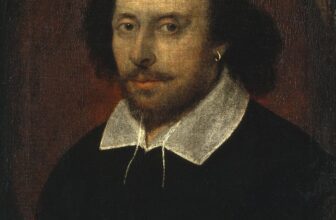
Gustave Caillebotte’s “Paris Street; Rainy Day”
In the world of Impressionist art, Gustave Caillebotte’s “Paris Street; Rainy Day” stands as a masterpiece of urban realism, a breathtaking tableau that captures the rhythm and pulse of life in 19th-century Paris with unparalleled precision and poignancy. Painted in 1877, during a time of rapid modernization and social change, Caillebotte’s iconic work offers a window into the bustling streets and bustling lives of the French capital, inviting viewers to immerse themselves in its bustling energy and timeless beauty.
At first glance, “Paris Street; Rainy Day” appears to be a simple scene of everyday life—a snapshot of a rainy afternoon in Paris, with pedestrians hurrying through the wet streets under the shelter of umbrellas. Yet, upon closer inspection, the painting reveals itself to be a rich tapestry of detail and nuance, with each element carefully orchestrated to evoke a sense of depth and atmosphere.
The focal point of the painting is a couple strolling arm in arm along the boulevard, their umbrellas casting long shadows on the glistening cobblestones below. The man, dressed in a top hat and overcoat, exudes an air of refinement and sophistication, while the woman, her parasol held aloft, adds a touch of elegance and grace to the scene. Behind them, a horse-drawn carriage trundles past, its wheels churning up spray as it disappears into the misty distance.
What sets “Paris Street; Rainy Day” apart from other depictions of urban life is Caillebotte’s meticulous attention to detail and his masterful use of perspective. The composition of the painting is carefully balanced, with the diagonal lines of the street drawing the viewer’s eye toward the vanishing point in the distance. This creates a sense of depth and movement, as if the viewer is being pulled into the very heart of the bustling metropolis.
Equally striking is Caillebotte’s treatment of light and color. Despite the overcast skies and drizzling rain, the painting is suffused with a soft, ethereal glow that imbues the scene with a sense of warmth and intimacy. The muted tones of gray and brown are punctuated by flashes of vibrant color—the crimson umbrellas, the emerald green of the trees, the golden glow of the gas lamps—that lend the painting a sense of vibrancy and life.
Yet, for all its beauty and elegance, “Paris Street; Rainy Day” is also a work of social commentary—a reflection of the profound changes sweeping through French society in the wake of industrialization and urbanization. Caillebotte’s depiction of the modern cityscape, with its broad boulevards and grand boulevards, stands as a testament to the transformative power of progress, while also hinting at the alienation and anonymity that can accompany urban life.
In this sense, the figures in the painting—anonymous and indistinct, their faces obscured by the shadows of their umbrellas—serve as symbols of the modern urban experience, caught between the allure of the city and the solitude of the crowd. Despite their proximity to one another, they remain isolated and alone, lost in their own thoughts and concerns—a poignant reminder of the human condition in an increasingly fragmented world.
Over the years, “Paris Street; Rainy Day” has become synonymous with the spirit of Paris itself—a city of romance, intrigue, and endless possibility. It has inspired countless artists, writers, and filmmakers, who have sought to capture its timeless beauty and allure. And yet, despite the passage of time, Caillebotte’s painting remains as fresh and relevant today as it was over a century ago.




